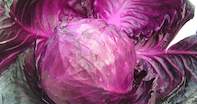
Plant Description
A rosette of green leaves wrapping around a short stem forming a central ball or head. It has an adventitious root system meaning roots arise from the stem or leaf organ not the root axis.Uses
Can be cooked or consumed raw as a salad. The entire plant can be eaten.Soil Requirements and Preparation
Cabbage can be grown on a range of soils but thrives on well-drained, moisture-retentive loamy soils well supplied with organic matter. It does not grow well on highly acidic soil.
The ideal soil pH ranges from 5,5 to 6,5 and it should not be allowed to fall below 4,5. In soils with pH above 6,5 the leaves become dark but leaf margins die back. Plants in saline soils are also highly susceptible to blackleg.
Climate
Grows best in a cool and humid climate. Leaves are more distinctly petioled and the quality of the head is impaired in drier atmospheres. The delicate flavour is also lost under these conditions.
Yield and quality are poor in summer and it is also difficult to control insect pests. The optimum temperatures for growth and development are from 18°C to 20°C. It is fairly resistant to frost and can survive temperatures as low as - 3°C without damage.
Cabbage is also adapted to a wide variety of climatic conditions and can be grown throughout the year in most regions.
Day Length
Can be grown throughout the year but quality is effected in dry, too warm climates.Cultivars
Several types of cabbage are grouped into conical or sugarloaf-headed, ballheaded and drum-headed based on the shape of the head and the savoy.
Seasonal selections are as follows: Autumn and spring – Conquestador and Gladiator Spring and late summer – Tenacity and Conquestador Late summer – Hercules, Drumhead and Grand Slam Late summer to autumn - Megaton They can also be classified according to their colour and growth cycle.
The leaves may be green or red and smooth or wrinkled. The savoy types are tolerant to cold conditions and they have deep-wrinkled dark green-leaves.
By Louise Brodie